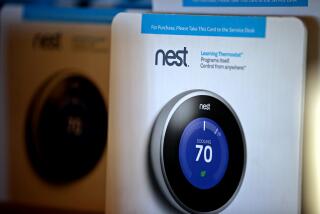A push to get lenders to reward energy efficiency in homes
WASHINGTON — For the growing numbers of home purchasers who care about energy efficiency, it’s the ultimate “green” goal: Lenders should recognize the net savings that energy improvements provide to property owners and take them into account when they underwrite and set the fees for mortgages. Appraisers should also recognize the added value.
The rationale: Owners of homes that reduce energy consumption pay lower utility bills than owners of energy guzzlers, so why not factor these out-of-pocket savings into calculations of household debt-to-income ratios and appraised valuations? This might permit larger mortgage amounts for energy-efficient homes and help qualify more first-time buyers who are now frequently rejected on debt-ratio grounds.
Though this is commonplace in other countries, it’s a work in progress in the United States. Bipartisan legislation is pending in the Senate — the Sensible Accounting to Value Energy (SAVE) Act — that would require Fannie Mae, Freddie Mac, the Federal Housing Administration and other federal mortgage players to revise their rules to better recognize and reward energy savings.
More than 125 local Realtor multiple-listing services across the country are helping out by including “green fields” in their online listing information displays. The green fields allow sellers, buyers, realty agents and appraisers to describe energy improvements or special certifications that a property offers, such as high-performance windows and doors, heavy-duty insulation, Energy Star appliances, and solar, geothermal and other features.
Thousands of appraisers are undergoing “green valuation” training and the country’s largest association in that field, the Appraisal Institute, has created a comprehensive “green addendum” that can be used to translate energy conservation improvements into higher property valuations.
But there’s just been another milestone on the way to seeing green in real estate: A major American private mortgage insurance company plans to jump into green lending, and is gearing up to offer a version of what it already provides to buyers in Canada — cost savings to energy conservers.
Adam Johnston, chief appraiser for Genworth Mortgage Insurance, says his company is determined to incorporate energy savings and green valuations into its underwriting procedures. This is becoming more feasible, he said, because of advances such as the green appraisal addendum, more accurate multiple-listing service listing data and growing acceptance of energy-efficiency standards for homes.
In Canada, Genworth offers buyers a 10% “energy-efficient refund” of their mortgage insurance premiums, a break on debt-to-income ratio calculations in underwriting and online access to discounts on a wide variety of commonly purchased household items.
Here’s an example of how the program works north of the border. On a $300,000 mortgage with a 5% down payment, the total insurance premium comes to $8,250. If you’re buying a house that doesn’t qualify on energy conservation standards, that’s what you’d pay.
But if the home you’re purchasing meets national or provincial energy efficiency guidelines, you may qualify for an $825 refund and have your monthly savings on heating factored into your debt service ratios. Your lender might also approve you for a larger mortgage amount if you need it.
To get the benefits on an existing property, the house must be certified as either 20% more efficient than Canada’s Model National Energy Code for Buildings or 5% more efficient than any applicable provincial standards, whichever is greater.
Johnston said that while there’s no specific starting date yet for Genworth to begin offering mortgage insurance breaks on green-certified homes, it’s coming. By necessity, insurers such as Genworth are highly sensitive to a variety of borrower risk factors, and now they have statistical evidence that people who buy homes with significant energy-saving components present lower risks for lenders and insurers.
A national study tracking payments on 71,000 home loans found that mortgages on energy-efficient properties are 32% less likely to default. Funded by the Institute for Market Transformation and conducted by researchers at the University of North Carolina, the study controlled for other factors that might explain payment performance, including income, home values, credit scores and local utility costs.
Other, subtler factors could be at work — for example, are buyers who care about energy conservation and utility payments inherently more likely to care about keeping current on their mortgage? Who knows?
Bottom line: Though this country is years behind Canada in recognizing and valuing home energy efficiency, there are now determined efforts underway in the appraisal, lending, building and realty brokerage industries — even in Congress — to catch up, sooner rather than later.
Distributed by Washington Post Writers Group
More to Read
Inside the business of entertainment
The Wide Shot brings you news, analysis and insights on everything from streaming wars to production — and what it all means for the future.
You may occasionally receive promotional content from the Los Angeles Times.










